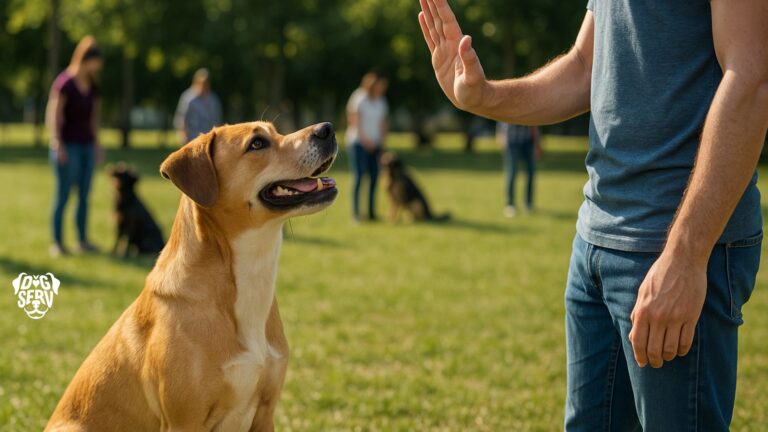Obedience Training for Dogs: Why It’s a Must
Transparency matters to us! This post may include affiliate links, which means we earn a small commission if you make a purchase through our recommendations. This is at no additional cost to you. Read our full affiliate disclosure.
Sarah thought she had everything under control until her golden retriever Max bolted across a busy street, chasing after another dog. The near-miss with oncoming traffic made her realize that her loveable but untrained companion was putting himself and others at serious risk. That moment changed everything about how she viewed obedience training for dogs. What started as an optional “nice-to-have” suddenly became an urgent necessity for her family’s safety and peace of mind. Dogs trained with positive reinforcement methods show significantly better behavioral outcomes than those without structured guidance. The difference between a well-trained dog and an untrained one often determines whether families can fully enjoy their companionship or constantly worry about unpredictable behaviors. Every dog owner faces this same reality, whether they recognize it early or learn it through challenging experiences like Sarah’s close call.
Key Takeaways
- Safety Protection is Paramount: Obedient dogs respond reliably to emergency commands, preventing dangerous situations and protecting both pets and people
- Behavioral Issues Prevention Works: Early obedience training prevents serious problems from developing, making dogs easier to manage throughout their lives
- Mental Health Benefits Are Real: Training reduces anxiety and stress in dogs while providing essential mental stimulation and confidence building
- Owner-Dog Bond Strengthens: Structured training creates clear communication, mutual respect, and deeper companionship between dogs and their families
- Socialization Skills Development: Obedience training builds dogs’ ability to interact safely and confidently with people, animals, and new environments
- Lifelong Benefits Continue: Consistent training maintenance throughout a dog’s life maintains lasting behavioral improvements and quality of life
1. The Critical Safety Benefits of Obedience Training
When emergency situations arise, the difference between a trained and untrained dog can be life or death. Obedience training creates reliable communication pathways that allow owners to quickly redirect their dogs away from danger, whether that’s an approaching car, toxic food dropped on the ground, or an aggressive encounter with another animal. Dogs who master basic obedience commands like recall and “leave it” have significantly lower rates of accidents and injuries because they can be stopped mid-action when threats appear. The investment in training pays off immediately when these critical moments arise, potentially saving veterinary bills, legal issues, and heartbreak that comes from preventable accidents.
Emergency Response and Recall Training
Reliable recall training serves as the ultimate safety net for dogs in unpredictable situations. When a dog understands and consistently responds to the “come” command, owners can call them back from busy streets, away from aggressive dogs, or out of dangerous situations before harm occurs. Professional training programs report that dogs with solid recall training have dramatically lower injury rates compared to untrained dogs who may ignore their owner’s calls during critical moments. The “leave it” command becomes equally important when dogs encounter potentially toxic substances, sharp objects, or items that could cause choking or intestinal blockages. These emergency response skills require consistent practice and positive reinforcement to become reliable, but they form the foundation of safe dog ownership in modern environments where dangers can appear without warning.

2. Behavioral Improvements That Transform Daily Life
Problem behaviors like excessive barking, jumping on visitors, pulling on walks, and destructive chewing can make dog ownership stressful and exhausting rather than enjoyable. Obedience training addresses these common issues systematically, teaching dogs appropriate responses to everyday situations while giving owners effective tools for managing their pets. Instead of constantly reacting to unwanted behaviors, trained dogs learn what their owners expect, creating smoother interactions and more peaceful households. The transformation often happens gradually, with small improvements building into major behavioral changes that enhance the quality of life for everyone in the family.
Managing Problem Behaviors Through Structured Training
Structured obedience training provides dogs with clear expectations and consistent consequences, which naturally reduces confusion and anxiety that often drive problem behaviors. Dogs who receive positive reinforcement training learn to associate good behavior with rewards, making them more likely to repeat desired actions rather than acting impulsively. Jumping on people decreases when dogs learn that sitting calmly gets attention, while jumping results in being ignored. Excessive barking diminishes when dogs understand specific commands for quiet time and receive mental stimulation that addresses the underlying causes of their vocalizations. Leash pulling becomes manageable when dogs learn to walk beside their owners and receive positive feedback for maintaining proper position. These improvements happen because obedience training teaches dogs how to think through their responses rather than simply reacting to stimuli around them.
3. Mental Health and Psychological Benefits for Dogs
Dogs need mental exercise just as much as physical activity, and obedience training provides structured cognitive challenges that keep their minds engaged and healthy. Training sessions reduce stress hormones like cortisol in dogs while increasing confidence through successful completion of tasks and positive interactions with their owners. Dogs who lack mental stimulation often develop anxiety, depression, or destructive behaviors as they attempt to cope with boredom and excess energy. The structured nature of obedience training gives dogs a sense of purpose and accomplishment that contributes significantly to their overall psychological well-being.
Confidence Building and Stress Reduction
Regular training sessions create positive experiences that build a dog’s confidence in their ability to learn, adapt, and please their owners. Dogs who participate in positive reinforcement training show measurable decreases in anxiety-related behaviors like excessive panting, pacing, or destructive chewing when left alone. The predictable structure of training provides dogs with a sense of security and control over their environment, which reduces overall stress levels. As dogs master new commands and receive consistent positive feedback, they develop better emotional regulation and coping skills that serve them well in challenging situations. This psychological foundation helps dogs adapt more easily to changes in their routine, new environments, or unexpected events that might otherwise cause significant distress.
4. Strengthening the Owner-Dog Relationship
The bond between dogs and their owners deepens significantly through obedience training because it establishes clear communication patterns and mutual understanding. Well-trained dogs and their owners report higher satisfaction levels in their relationships compared to families struggling with behavioral issues. Training creates positive shared experiences where both dog and owner work toward common goals, building trust and respect that extends far beyond formal training sessions. When dogs understand what their owners expect and owners learn to communicate effectively with their pets, daily interactions become more enjoyable and less frustrating for everyone involved.
Building Trust Through Positive Training Methods
Positive reinforcement training methods create lasting trust because they focus on rewarding good behavior rather than punishing mistakes. Dogs trained with reward-based methods develop stronger bonds with their owners and show more willingness to engage in learning new skills throughout their lives. This approach teaches dogs that their owners are sources of good things rather than figures to fear, which naturally strengthens the emotional connection between them. The consistent positive interactions during training sessions carry over into daily life, creating a foundation of trust that makes dogs more responsive to guidance and more relaxed in their owners’ presence. When challenges arise, dogs who have been trained positively are more likely to look to their owners for direction rather than becoming defensive or fearful.

5. Socialization and Public Behavior Development
Well-trained dogs can safely participate in more activities and visit more places with their families, expanding their social experiences and enriching their lives. Obedience training prepares dogs for interactions with strangers, other animals, and novel environments by teaching them appropriate responses to various stimuli. Dogs who understand basic commands like “sit,” “stay,” and “leave it” can be managed effectively in public spaces, making them welcome in more situations and locations. The confidence gained through training helps dogs approach new experiences with curiosity rather than fear or aggression, leading to more positive social interactions overall.
Group Training Classes and Social Skills
Group obedience classes provide controlled environments where dogs can practice social skills while learning commands. Dogs who participate in group training develop better impulse control around other animals and learn to focus on their owners despite distractions. These classes teach dogs to remain calm and responsive even when other dogs are present, which translates to better behavior during walks, at dog parks, or in other social settings. The structured nature of group classes helps reactive or anxious dogs gradually build confidence in social situations while providing owners with guidance on managing their pets around others. Many dogs who struggle with social anxiety or aggression show remarkable improvement after participating in well-managed group training programs.
6. Professional Training vs. Self-Training Approaches
While 94% of dog owners do some form of training, only 8% use professional obedience classes, which creates a significant gap between the desire to train and access to effective methods. Many owners attempt self-training through online videos, books, or advice from friends, but lack the expertise to address complex behavioral issues or recognize when their methods aren’t working. Professional trainers bring years of experience, knowledge of dog behavior, and objective perspectives that can accelerate training progress and prevent common mistakes that might actually reinforce problem behaviors. The decision between professional and self-training often depends on the dog’s specific needs, the owner’s experience level, and the complexity of behavioral issues involved.
When to Seek Professional Obedience Training
Professional training becomes essential when dogs display aggressive behaviors, severe anxiety, or deeply ingrained problem habits that resist basic training efforts. Dogs with complex behavioral issues often need specialized approaches that trained professionals can provide more effectively than owners working alone. Signs that professional help is needed include dogs who don’t respond to basic commands after weeks of consistent practice, show fearful or aggressive reactions to normal situations, or have behavioral problems that are getting worse despite training efforts. Professional trainers can also help owners who feel overwhelmed, lack confidence in their training abilities, or want to ensure they’re using the most effective methods from the start. Even dogs without serious behavioral issues often benefit from professional training because trainers can teach owners advanced techniques and help them avoid developing bad habits that might create problems later.
7. The Science Behind Positive Reinforcement Methods
Scientific research consistently supports positive reinforcement as the most effective and humane approach to dog training. Studies show that dogs trained with reward-based methods learn faster, retain training longer, and show fewer stress-related behaviors compared to dogs trained with punishment-based techniques. The science behind this approach reveals that positive experiences create stronger neural pathways in dogs’ brains, making learned behaviors more reliable and automatic over time. Dogs trained through positive reinforcement also maintain better relationships with their owners and show more willingness to engage in new learning throughout their lives.
Research-Based Training Techniques
Modern dog training research has moved away from dominance-based theories toward understanding dogs as cooperative partners who learn best through clear communication and positive experiences. Studies measuring stress hormones in dogs during training sessions show that positive methods produce lower cortisol levels and higher rates of learning compared to correction-based approaches. Research also demonstrates that dogs trained with positive reinforcement show more problem-solving abilities and creative thinking, suggesting that reward-based training enhances cognitive development rather than simply creating robotic responses. These findings have led professional trainers and veterinary behaviorists to recommend positive methods not just for their effectiveness, but for their contribution to dogs’ overall mental health and well-being.

8. Essential Commands Every Dog Must Master
Every dog needs a foundation of basic commands that serve as building blocks for safety, communication, and daily life management. Core obedience commands like sit, stay, come, down, leave it, and drop it form the essential vocabulary between dogs and their owners, providing tools for managing almost any situation that might arise. These commands aren’t just tricks or conveniences; they’re practical skills that keep dogs safe, help them integrate into family life, and create the groundwork for more advanced training if desired. Mastering these basics gives both dogs and owners confidence to handle daily challenges and enjoy their time together more fully.
Foundation Commands for Safety and Control
The “sit” command serves as the foundation for almost all other training because it teaches dogs to pause and focus on their owners before acting. “Stay” adds duration and impulse control, allowing owners to manage their dogs in situations that require patience or temporary restraint. The “come” command becomes a lifeline in emergency situations where immediate recall can prevent accidents or dangerous encounters. “Down” provides a way to calm excited dogs and create longer periods of controlled behavior when needed. “Leave it” and “drop it” protect dogs from harmful substances and teach them to release objects on command, preventing resource guarding and potential health hazards. These six commands, when properly taught and consistently reinforced, give owners effective tools for managing their dogs in virtually any situation they might encounter.
9. Early Training for Lifelong Benefits
Dogs who receive obedience training before six months of age show significantly better behavioral outcomes throughout their lives compared to dogs who start training later. The critical socialization period between 8 and 16 weeks represents a unique window when puppies are most receptive to new experiences and learning. During this time, their brains are rapidly developing neural pathways that will influence their behavior patterns for years to come. Early training takes advantage of this developmental period to establish positive behaviors and prevent problems from developing rather than trying to fix them after they become habits.
The Critical Period for Puppy Obedience Training
Puppy training classes provide controlled environments where young dogs can learn basic obedience while safely interacting with other puppies and people. The socialization that occurs during these early training sessions helps prevent fear-based behaviors and aggression that can develop when dogs lack positive early experiences. Research shows that puppies who attend obedience classes during their critical period are less likely to develop separation anxiety, resource guarding, or fearful reactions to normal household activities. These early positive experiences with training also make dogs more responsive to continued education throughout their lives, creating a foundation that supports lifelong learning and behavioral flexibility. The investment in early training typically requires less time and effort than trying to modify established problem behaviors in adult dogs.
10. Lifelong Training Maintenance and Consistency
Obedience training is not a one-time event but an ongoing process that requires regular practice and reinforcement throughout a dog’s life. Dogs who receive initial training but lack continued practice often experience behavioral regression, gradually losing their responsiveness to commands and reverting to old habits. Maintaining training gains requires consistent daily practice, periodic refresher sessions, and ongoing positive reinforcement for good behavior. The effort invested in maintenance training prevents the frustration and expense of having to retrain dogs who have forgotten their lessons or developed new problem behaviors.
Preventing Behavioral Regression Through Ongoing Training
Regular practice sessions help keep obedience skills sharp and maintain the strong communication patterns established during initial training. Dogs who receive ongoing training maintenance show more stable behavior patterns and adapt more easily to changes in their environment or routine. Short daily training sessions can be incorporated into regular activities like feeding time, walks, or play sessions, making maintenance training a natural part of daily life rather than a separate chore. As dogs age, their cognitive function benefits from continued mental stimulation through training exercises, helping maintain their sharpness and engagement with their owners. The relationship between dog and owner also continues to strengthen through ongoing training, as both parties continue learning and growing together throughout their shared journey.
Common Obedience Training Mistakes to Avoid
Many well-intentioned dog owners make training mistakes that can slow progress or even create new problems. Inconsistent command usage confuses dogs when different family members use different words for the same behavior, making it harder for dogs to understand what’s expected. Delayed timing in corrections and rewards reduces their effectiveness because dogs can’t connect the feedback to the specific behavior being addressed. Mixing punishment with positive methods creates confusion and anxiety, as dogs struggle to predict whether interactions with their owners will be pleasant or unpleasant. Unrealistic expectations about how quickly dogs should learn can lead to frustration and inconsistency in training approaches. Failing to practice commands in various environments and situations limits dogs’ ability to generalize their training to real-world scenarios.
The Cost of Skipping Obedience Training
Dogs without proper training face higher surrender rates to shelters due to behavioral problems that become unmanageable for their families. Problem behaviors often worsen over time when left unaddressed, creating increasingly difficult situations that strain the relationship between dogs and their owners. Safety risks multiply when dogs don’t respond reliably to basic commands, potentially leading to injuries, property damage, or legal liability for their owners. The financial costs of untrained dogs can include damaged furniture and belongings, veterinary bills from preventable accidents, potential legal fees if dogs cause injuries, and the emotional cost of surrendering a beloved pet due to behavioral issues. Families with untrained dogs often find their lifestyle options limited, unable to travel with their pets, visit friends and family, or participate in activities that would otherwise bring joy to both dogs and owners.
Success Stories and Case Studies
Real-world case studies demonstrate the transformative power of obedience training for dogs with various behavioral challenges. A rescue dog named Luna overcame severe separation anxiety through consistent training that taught her to remain calm when left alone, allowing her family to return to normal work schedules without worrying about destructive behaviors. Max, a reactive German Shepherd, learned impulse control and appropriate social responses through structured group training classes, transforming from a dog who couldn’t walk past other animals to one who enjoys regular trips to the dog park. Success stories from professional trainers include aggressive dogs who learned to trust again, fearful dogs who gained confidence, and hyperactive dogs who found focus and purpose through training activities. These transformations typically require time, patience, and consistent effort, but they demonstrate that almost any behavioral challenge can be addressed through appropriate training approaches.

Frequently Asked Questions About Obedience Training for Dogs
Q: At what age should I start obedience training with my dog?
A: Obedience training should begin as early as 8 weeks old, with the critical socialization period being most effective before 16 weeks. However, dogs of any age can benefit from training.
Q: How long does it take to see results from obedience training?
A: Most dogs show noticeable improvement within 2-4 weeks of consistent training, with significant changes typically visible within 2-3 months of regular practice.
Q: Is obedience training necessary for naturally well-behaved dogs?
A: Yes, even naturally calm dogs benefit from training for safety, mental stimulation, and building stronger communication with their owners. All dogs need basic obedience skills regardless of their temperament.
Q: Can older dogs still benefit from obedience training?
A: Absolutely, dogs of any age can learn new behaviors and benefit from the mental stimulation and structure that training provides.
Q: What’s the difference between obedience training and general dog training?
A: Obedience training focuses specifically on fundamental commands and impulse control, while general training may include tricks, sports, or specialized behaviors beyond basic obedience skills.
Q: How much does professional obedience training typically cost?
A: Costs vary by location and training method, but professional training programs typically range from $100-300 for group classes to $500-1500 for private training sessions.
Q: Should I train my dog myself or use a professional trainer?
A: While many owners do basic training themselves, professional trainers are recommended for complex behavioral issues, first-time owners, or when self-training isn’t producing results.
Obedience training for dogs represents one of the most valuable investments any dog owner can make. The evidence consistently shows that trained dogs live safer, happier lives while building stronger bonds with their families. From preventing dangerous situations to reducing behavioral problems, from supporting mental health to creating lifelong companionship, the benefits of obedience training extend far beyond simple command following. Every dog deserves the confidence and security that comes from understanding their role in the family and knowing how to navigate the modern world safely. Whether you’re welcoming a new puppy or working with an adult dog who needs guidance, starting obedience training today will pay dividends for years to come.
At DogServ, we understand that every dog’s training journey is unique. Our platform connects dog lovers with expert advice, honest product reviews, and comprehensive care guides that support successful training efforts. From selecting the right training tools to finding qualified professional trainers in your area, we’re here to help you give your dog the foundation they need for a lifetime of good behavior and strong companionship. Your dog’s training success starts with having the right information and support, and we’re committed to providing both every step of the way.








Calvin Hewitt is the primary author and driving force behind DogServ, bringing over 27 years of business expertise and 7 years of specialized digital marketing experience to the dog service industry. As the founder of Web Leveling and architect of DogServ’s evolution from a simple directory to a comprehensive one-stop shop for dog lovers, Calvin has created highly performing dog training websites in competitive markets, developed popular applications like “Can My Dog Eat?” and “Puppy Planning Checklist,” and generated thousands of monthly page views with his dog service content. Based in the Houston area but serving dog lovers and service providers nationally and internationally, Calvin works alongside a dedicated team of seven professionals, combining analytical rigor from his banking and energy industry background with a genuine passion for connecting dog owners, dog lovers, and service providers through quality content, innovative applications, and trusted recommendations.